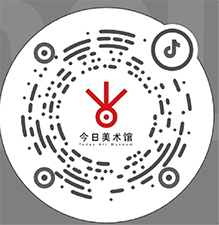The opening ceremony and award presentation of Together on the Path: the 1st “Ovation Star” - Excellent Works Exhibition for Youth Support Plan is launched on 5 December 2014 in Building 3 at Beijing Today Art Museum. The “Ovation Star” - Excellent Works Exhibition for Youth Support Plan is initiated by Beijing Ovation Art Development Co, Ltd. and funded by ENN Charitable Foundation. The program provides funding for outstanding young teachers and new graduates of national key art institutions all over China. A board of judges consisting a good number of renowned artists and scholars nationwide is established. The awards include one prize of distinction for young teacher, and 3 tiers of prizes for excellent new graduates. All awards are published and presented at the opening ceremony of the exhibition.
The exhibition showcases young generation of artists from major art institutions in China and provides them a platform to achieve in the company of one another. The selected young artists are very representative and their works are shown in six genealogically divided sections: Media Language, Personal Perspectives, Reinterpreting the Tradition, References to the Society, Expression across Time and Space, and Humanistic Living. The broad inclusion of candidates and multi-section layout of the exhibition enables it to be very diversified. It covers aspects such as realistic and abstract, individual images and public visuality, academic techniques and language experimentation, classical genres and interdisciplinary exploration. We may also see co-existence of traditional and nouveau media at this exhibition. It demonstrates the multi-dimensional quality of art experience and the differences of spiritual pursuits. It also presents the various living states of the younger generation currently. The “Ovation Star” - Excellent Works Exhibition for Youth Support Plan presents the outstanding works of these award-winning young art teachers and students to the public to help them catch more attention from the communities and enlarge their space for future career development.
Together on the Path
There is a maxim in the Chinese classic literature the Spring and Autumn Annals of Yanzi: "those who take actions are more likely to achieve something; those who move forward may more often reach somewhere." The title of the exhibition is also intended to convey the message that young artists should always go forward and Ovation is always in their company and supporting them to achieve ever better future. Young artists need to help each other as well as compete. They should not only share similar aspiration in art, but also have their own individual characteristics as an artist. The title is an urge on the younger generation to take real actions. Only then are their ideals within reach.
Together·Media Language
Media Language is a section which features works by Huang Lan, Lu Jiaqing, Ran Huaming, Ren Zhenyu, Song Hengyuan, Wang Chaogang, You Huaming, Yuan Chaochao, Yuan Wei and Zhu Xiaoqing. Their works focus on presenting the exploration of media characteristic and language. Greenberg, the American famous critic, once see media as the core feature of every art category on the ground of modernism. Nevertheless, Media Language is never exclusive to modernism but remains to be the elementary theme in any era. Numerous contemporary young artists still hold on to it and explore as much as possibility of using it to shape visual forms.
Together·Personal Perspectives
The section Personal Perspectives includes works by Chen Chonghui, Ji Xin, Jin Qifeng, Jin Xiaoyao, Ma Shuang, Pang Xiaochen and Tao Zhengwei. These works feature individual and microcosmic perspectives and most of them deliver the artist’s understanding, personal sentiment or perception toward the surrounding world. In recent years, increasing numbers of young artists create works from personal perspectives, which may embody the reflection toward symbolization and fashion-trend pursuit in contemporary art years before and the emphasis on personal feeling and physical experience during creation.
Together·Reinterpreting the Tradition
In the section Reinterpreting the Tradition, artists are keen on looking for inspiration from traditional cultural resources and reinterpreting it in the modernistic form. The utilization of traditional cultural resources has always interested academia on the ground that it concerns more than cultural continuation, but also the warmth of national sentiment and peril of nationalism. Most of the artists, Dai Yuzhou,Hu Xiaotong, Lin Jingyun, Lu Yaran, Ma Zhaolin, Su Jun, Xu Jiacun, Zhan Yang, Zhang Baichuan, and Zhang Zheyu, reinterpret the traditional culture from the perspective of language and cultural spirit rather than cultural or political strategies.
Together·References to the Society
Hou Jingqi, Huang Kunxiong, Jiang Shanshan, Liang Xu, Liu Yue, Zhang Yang, and Zheng Li express humanistic care and social responsibility in their works through References to the Society. Social concern has always been a basic theme in modern art, especially for Chinese artists, but the young artists nowadays consciously avoid the symbolization and simple ideological strategy before and reflect on social issues from individual life experience.
Together·Expression Across Time and Space
In the exhibition, Fan Handong, Gao Shihe, Wei Zihan, and Zhang An are obsessed with expression of time and space in paintings or reinforcement of space or introduction of time in sculptures. Kant saw time and space as apriori forms of intuition and on this account included the external world to the individual perceptual world. Therefore, the thought and expression of time and space concerns the fundamental perceptual way of human being and renders itself the eternal theme in artistic creation.
Together·Humanistic Living
Humanistic Living is a section consisting of works by Liu Xun, Wu Lijun, Wang Xiaotong, Xu Yang, Yi Maolin, Yu Yali, Zhao Yanbo, Zhang Moxi, and Zhang Zhexiong. How to embody the history of Chinese traditional humanistic care under the background of contemporary living? Designers who dare to take the responsibility always conceive the ideas and put them into practice based on what people need and how to guide people’s needs. In the living stuff of every era there runs the blood of traditional Chinese culture. In terms of how to inherit the classics and put them into the practice of contemporary expression, this section is attempting to explore and answer.

 Zhiguan: Wang Zimu Art Exhibition
Zhiguan: Wang Zimu Art Exhibition Seasons of Cezanne The Immersive Experience
Seasons of Cezanne The Immersive Experience Marie de Villein: Behind the Sun
Marie de Villein: Behind the Sun “一粒一世界——北京大学颗粒艺术展”
“一粒一世界——北京大学颗粒艺术展”
 Florentijn Hofman :Celebrate!
Florentijn Hofman :Celebrate! Li Nu: As if Sand Were Stone
Li Nu: As if Sand Were Stone Exhibition customization course | TIM YIP MIRROR children's art class
Exhibition customization course | TIM YIP MIRROR children's art class
 TAM Open Studio / Hello, New Friends
TAM Open Studio / Hello, New Friends WANG SHIKUO/TODAY ART MUSEUM YOUNG ARTIST RESIDENCY IN NEW YORK CITY
WANG SHIKUO/TODAY ART MUSEUM YOUNG ARTIST RESIDENCY IN NEW YORK CITY 2018 third wang shikuo award -- nomination exhibition of contemporary young artists
2018 third wang shikuo award -- nomination exhibition of contemporary young artists











